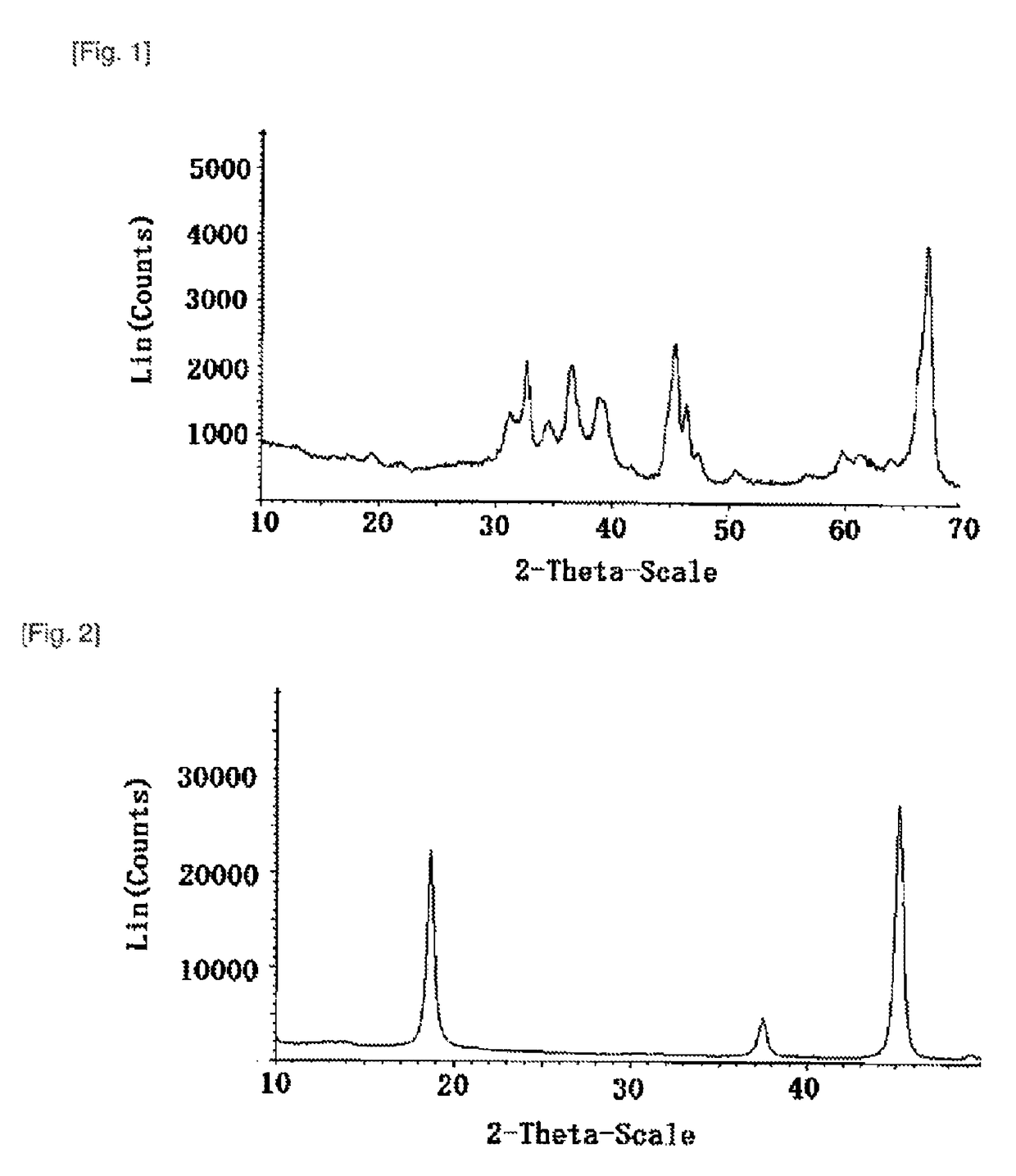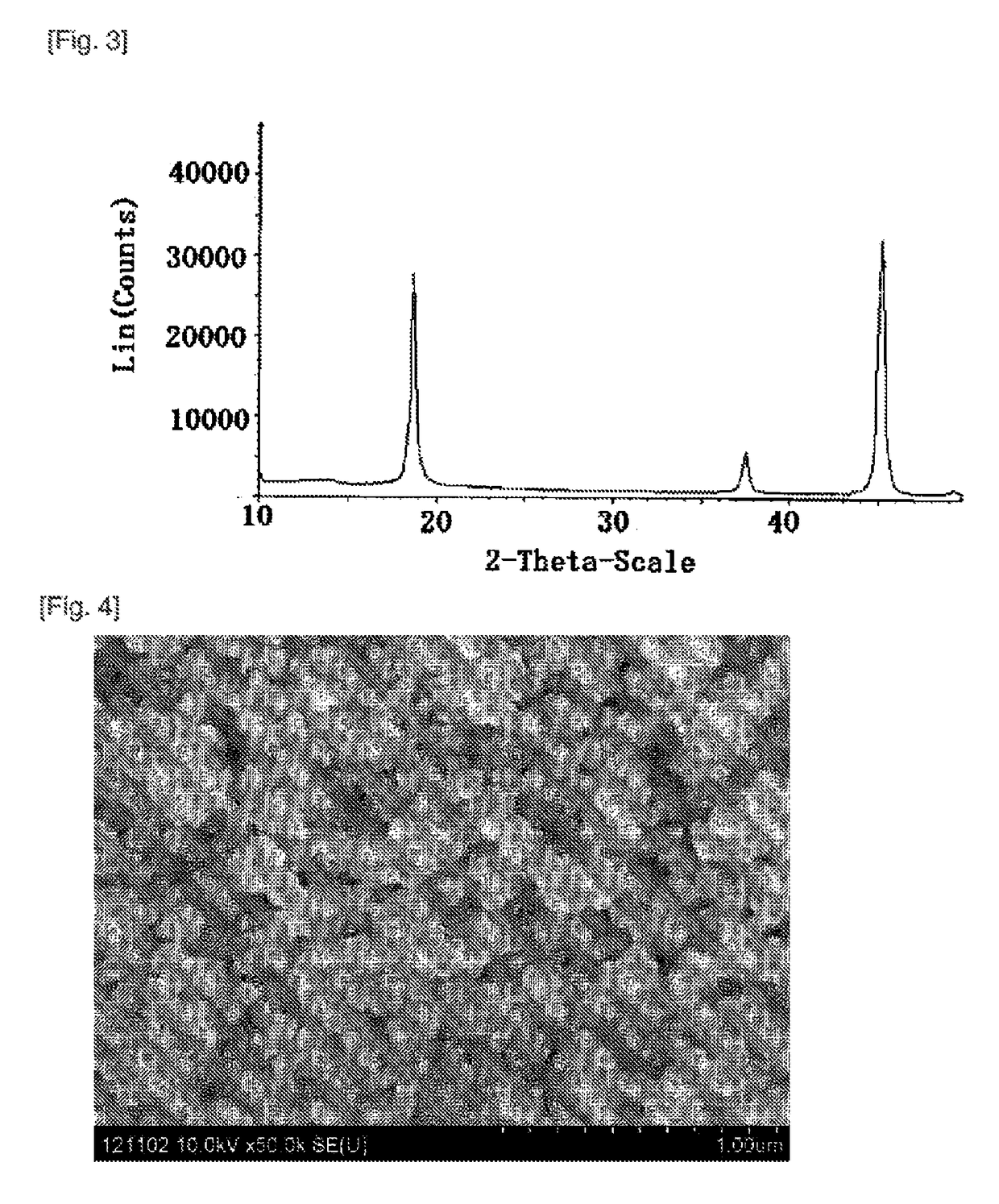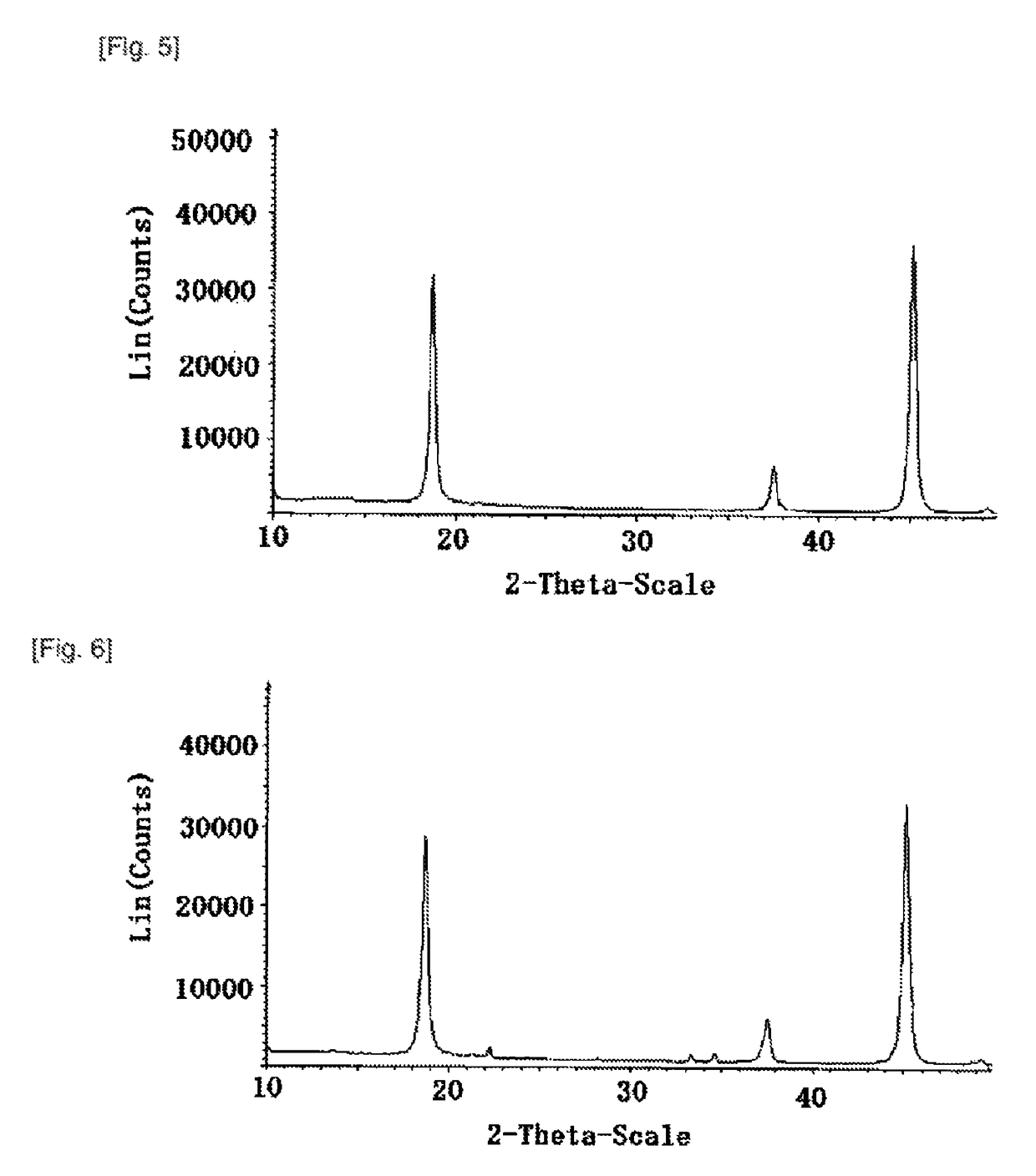Method for producing α-lithium aluminate
a technology of lithium aluminate and lithium aluminate, which is applied in the direction of aluminium compounds, electrochemical generators, fuel cells for electrolyte injection, etc., can solve the problems of high cost, inability to avoid the complexity and high cost of steps, and hardly provide the -lithium aluminate having thermal stability necessary for electrolyte matrices for mcfcs, etc., and achieve excellent thermal stability
- Summary
- Abstract
- Description
- Claims
- Application Information
AI Technical Summary
Benefits of technology
Problems solved by technology
Method used
Image
Examples
example 1
(a): A Mixture (a) Preparation Step
[0071]A commercially available θ-alumina (XRD in FIG. 1) having a BET specific surface area of 92 m2 / g and an average particle size determined by the laser method of 30 μm, and a lithium carbonate having an average particle size determined by the laser method of 5 μm were weighed in such amounts that the molar ratio (Al / Li) became 1.00, and fully mixed by a Henschel Mixer to thereby prepare a homogeneous mixture (a).
(b): A First Firing Reaction Step
[0072]The homogeneous mixture (a) was charged in an alumina crucible, and subjected to a first firing reaction at 700° C. for 25 hours in the air atmosphere to thereby obtain a fired product. The obtained fired product was subjected to X-ray diffraction analysis, and was a single-phase α-lithium aluminate (1) (see FIG. 2).
(c): A Mixture (b) Preparation Step
[0073]The same θ-alumina as used in the mixture (a) preparation step was added to the fired product so that the molar ratio (Al / Li) to Li in the α-lit...
example 2
(a): A mixture (a) Preparation Step
[0075]A commercially available γ-alumina having a BET specific surface area of 147 m2 / g and an average particle size determined by the laser method of 30 μm, and a lithium carbonate having an average particle size determined by the laser method of 5 μm were weighed so that the molar ratio (Al / Li) became 1.00, and fully mixed by a Henschel Mixer to thereby prepare a homogeneous mixture (a).
(b): A First Firing Reaction Step
[0076]The homogeneous mixture (a) was charged in an alumina crucible, and subjected to a first firing reaction at 700° C. for 25 hours in the air atmosphere to thereby obtain a fired product. The obtained fired product was subjected to X-ray diffraction analysis, and was a single-phase α-lithium aluminate (1).
(c): A Mixture (b) Preparation Step
[0077]The same γ-alumina as used in the mixture (a) preparation step was added to the fired product so that the molar ratio (Al / Li) to Li in the α-lithium aluminate (1) became 0.015, and ther...
PUM
| Property | Measurement | Unit |
|---|---|---|
| molar ratio | aaaaa | aaaaa |
| temperature | aaaaa | aaaaa |
| temperature | aaaaa | aaaaa |
Abstract
Description
Claims
Application Information
 Login to View More
Login to View More - R&D
- Intellectual Property
- Life Sciences
- Materials
- Tech Scout
- Unparalleled Data Quality
- Higher Quality Content
- 60% Fewer Hallucinations
Browse by: Latest US Patents, China's latest patents, Technical Efficacy Thesaurus, Application Domain, Technology Topic, Popular Technical Reports.
© 2025 PatSnap. All rights reserved.Legal|Privacy policy|Modern Slavery Act Transparency Statement|Sitemap|About US| Contact US: help@patsnap.com



